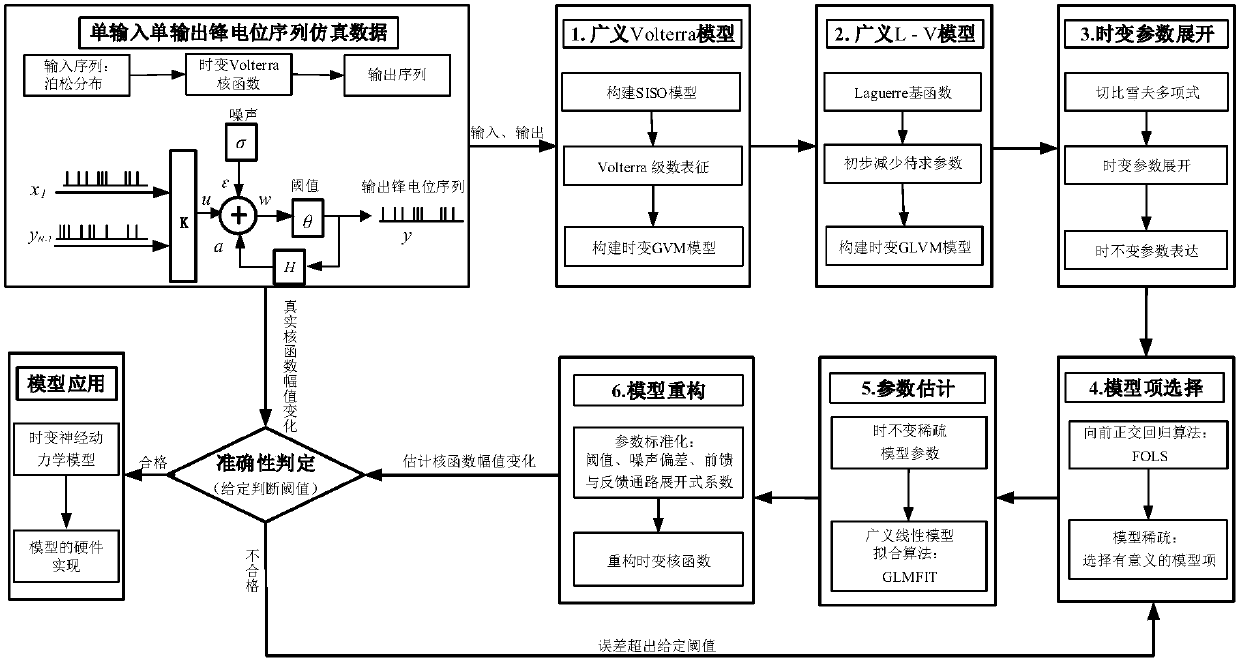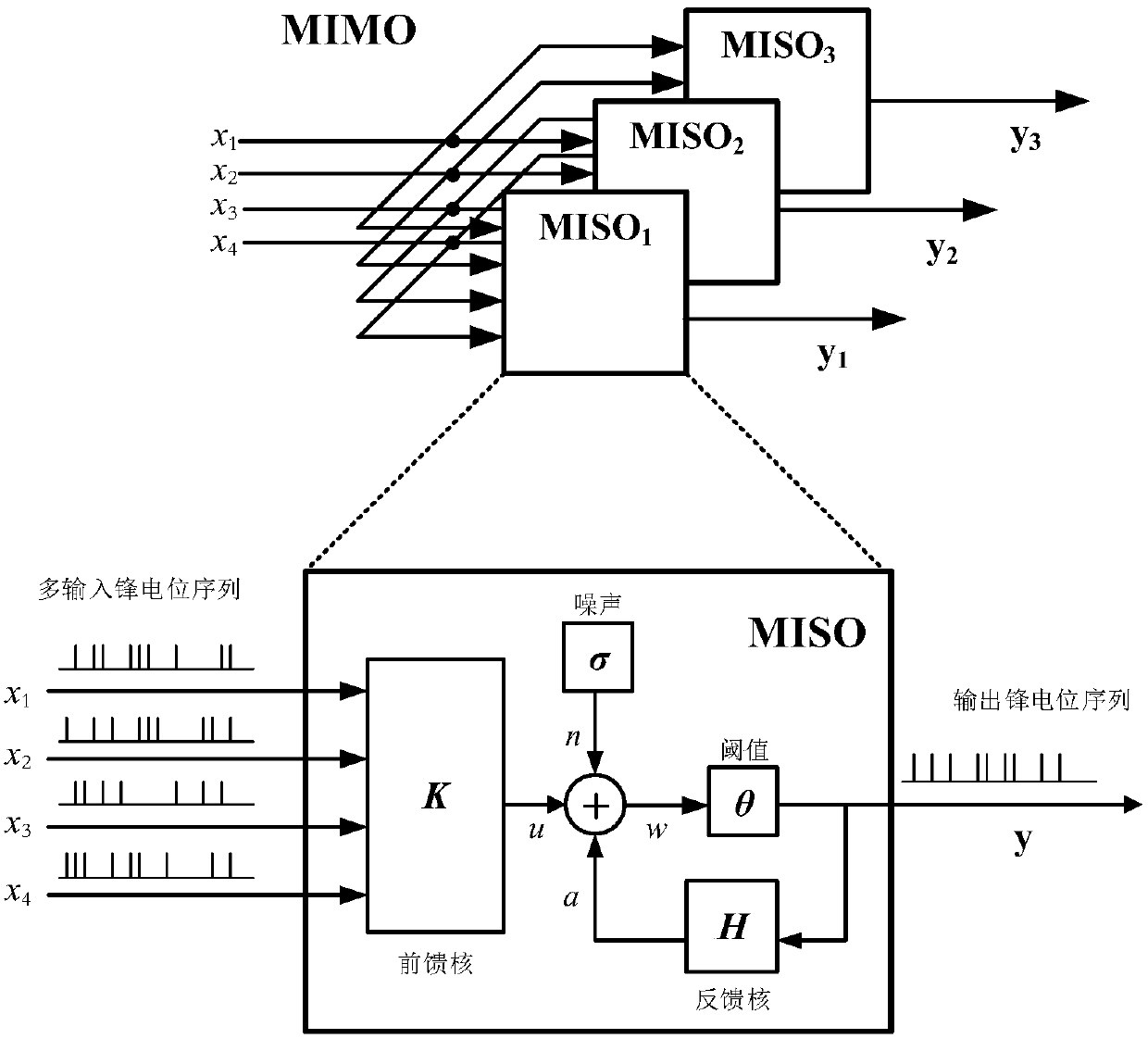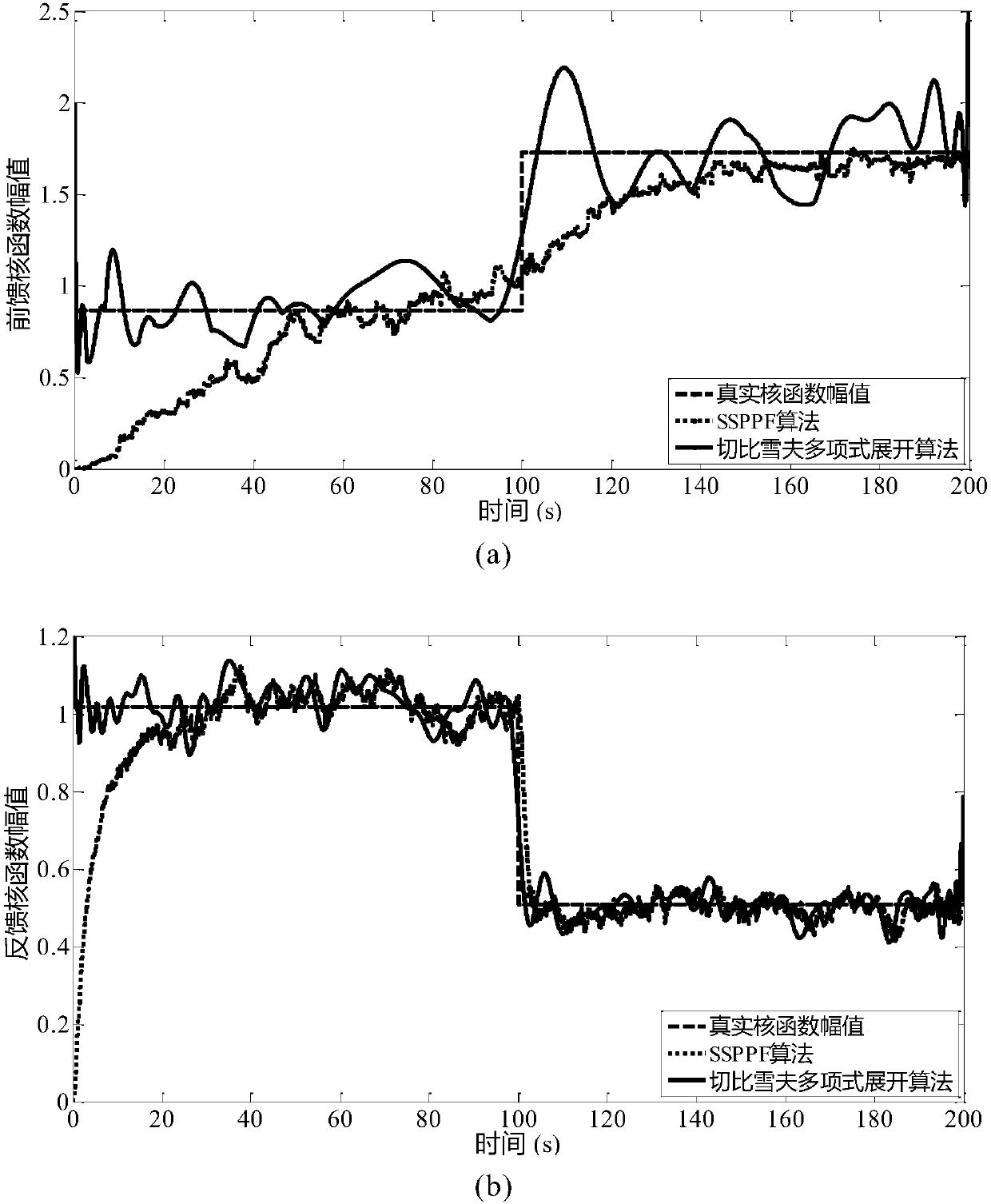Time-varying neural dynamics system identification method based on chebyshev polynomial expansion
A polynomial expansion and system identification technology, applied in the field of time-varying neural dynamics system identification algorithm, can solve the problems of time-varying system parameter result estimation delay, self-adaptive algorithm convergence defects, etc., and achieve fast calculation speed, simple method, and convergence fast effect
- Summary
- Abstract
- Description
- Claims
- Application Information
AI Technical Summary
Problems solved by technology
Method used
Image
Examples
Embodiment Construction
[0025] The present invention will be further described in detail below in conjunction with the accompanying drawings and specific embodiments.
[0026] The purpose of the present invention is to provide a new time-varying identification method based on polynomial expansion to solve the problem of time-varying system identification for neurodynamic systems, so as to be able to accurately and quickly track changes in kernel functions.
[0027] According to an embodiment of the present invention, a time-varying neurodynamic system identification method based on Chebyshev polynomial expansion is proposed. The time-varying parameters are expanded on a set of orthogonal bases, and the identification problem of the time-varying parameters is transformed into a time-invariant parameter estimation problem in the linear combination estimated by the known orthogonal functions and system inputs and outputs, and then the time-varying parameters are estimated by using the The method of inva...
PUM
 Login to View More
Login to View More Abstract
Description
Claims
Application Information
 Login to View More
Login to View More - R&D
- Intellectual Property
- Life Sciences
- Materials
- Tech Scout
- Unparalleled Data Quality
- Higher Quality Content
- 60% Fewer Hallucinations
Browse by: Latest US Patents, China's latest patents, Technical Efficacy Thesaurus, Application Domain, Technology Topic, Popular Technical Reports.
© 2025 PatSnap. All rights reserved.Legal|Privacy policy|Modern Slavery Act Transparency Statement|Sitemap|About US| Contact US: help@patsnap.com



